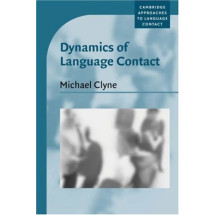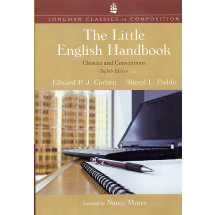1. LANGUAGE AND THE ENGLISH LANGUAGE: AN INTRODUCTION.
A Definition of Language. Language as System. Language as Signs. Language as Vocal. Language as Conventional. Language as Human. Language as Communication. Other Characteristics of Language. Why Study the History of English?
2. THE SOUNDS OF CURRENT ENGLISH.
The Organs of Speech. Consonants of Current English. Vowels of Current English. Stress. Kinds of Sound Change. Causes of Sound Change. The Phoneme. Differing Transcriptions.
3. LETTERS AND SOUNDS: A BRIEF HISTORY OF WRITING.
Ideographic and Syllabic Writing. From Semitic Writing to the Greek Alphabet. The Romans Adopt the Greek Alphabet. The History of English Writing. The Spelling of English Consonant Sounds. The Spelling of English Vowel Sounds. Spelling Pronunciations and Pronunciation Spellings. Writing and History.
4. THE BACKGROUNDS OF ENGLISH.
Indo European Origins. Language Typology and Language Families. Non Indo European Languages. Main Divisions of the Indo European Group. Cognate Words in the Indo European Languages. Inflection in the Indo European Languages. Word Order in the Indo European Languages. Major Changes from Indo European to Germanic. First Sound Shift. West Germanic Languages.
5. THE OLD ENGLISH PERIOD (449-1100).
Some Key Events in the Old English Period. History of the Anglo Saxons. Pronunciation and Spelling. Vocabulary. Grammar, Concord, and Inflection. Nouns. Modifiers. Pronouns. Verbs. Syntax. Old English Illustrated.
6. THE MIDDLE ENGLISH PERIOD (1100-1500).
Some Key Events in the Middle English Period. The Background of the Norman Conquest. The Reascendancy of English. Foreign Influences on Vocabulary. Middle English Spelling. The Rise of a London Standard. Changes in Pronunciation. Changes in Grammar. Nouns, Pronouns, and Adjectives. Verbs. Word Order. Middle English Illustrated.
7. THE EARLY MODERN ENGLISH PERIOD (1500-1800): SOCIETY, SPELLINGS, AND SOUNDS.
Some Key Events in the Early Modern Period. The Transition from Middle to Modern English. The Orthography of Early Modern English. The Great Vowel Shift. Other Vowels. Early Modern English Consonants. Evidence for Early Modern Pronunciation. Early Modern English Illustrated.
8. THE EARLY MODERN ENGLISH PERIOD (1500-1800): FORMS, SYNTAX, AND USAGE.
The Study of Language. Nouns. Adjectives and Adverbs. Pronouns. Verbs. Prepositions. Early Modern English Further Illustrated.
9. LATE MODERN ENGLISH (1800-21ST CENTURY).
Some Key Events in the Late Modern Period. The National Varieties of English. National Differences in Word Choice. Syntactical and Morphological Differences. British and American Purism. National Differences in Pronunciation. British and American Spelling. Variation within National Varieties. World English. The Essential Oneness of All English.
10. WORDS AND MEANINGS.
Semantics and Change of Meaning. Generalization and Specialization. Transfer of Meaning. Pejoration and Amelioration. Taboo and Euphemism. The Fate of Intensifying Words. Some Circumstances of Semantic Change. Semantic Change Is Inevitable.
11. NEW WORDS FROM OLD.
Creating Words. Combining Words: Compounding. Combining Word Parts: Affixing. Shortening Words. Blending Words. Shifting Words to New Uses. Sources of New Words.
12. FOREIGN ELEMENTS IN THE ENGLISH WORD STOCK.
Latin and Greek Loanwords. Celtic Loanwords. Scandinavian Loanwords. French Loanwords. Spanish and Portuguese Loanwords. Italian Loanwords. Germanic Loanwords. Loanwords from the East. Other Sources. The Sources of Recent Loanwords. English Remains English.
Selected Bibliography.
Glossary.
Index of Modern English Words and Affixes.
Index of Persons, Places, and Topics.












